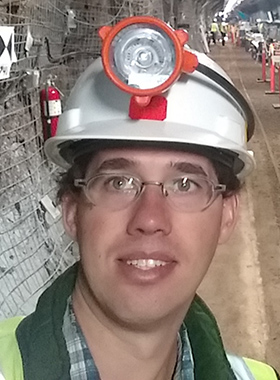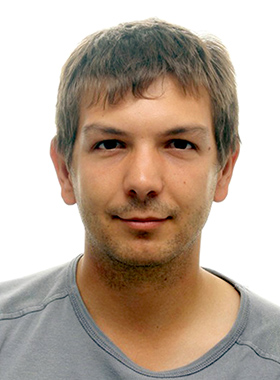Predicting the Unpredictable: Optimizing Geothermal System Design through Scaling Theory, Statistics, and Rock Fracture Fluid-Flow Phenomenology
Luke P. Frash
Los Alamos National Laboratory, USA

Biosketch
Luke P. Frash is a staff scientist at Los Alamos National Laboratory with more than 11 years experience in the topic area of rock fractures and fluid flow. His work includes triaxial experiments to characterize rock fracture strength, permeability, and geometry at in-situ stress and temperature conditions. This work has also included hydraulic fracture studies in rock blocks at elevated stress and temperature conditions. Most recently, he has been focusing on scaling theory to predict natural and stimulated fracture properties at in-situ conditions. Learnings from this work is currently being combined with laboratory and field experience to develop a fast simplified-physics rock fracture, fluid flow, and power prediction discrete fracture network model named “GeoDT”. Applications include fundamental geosciences, hydrology, CO2 sequestration and utilization, geothermal energy, oil and gas, and nuclear waste repositories.
Introduction of the Lecture
Enhanced Geothermal Systems (EGS) bring together complex multi-physics and subsurface uncertainty while at the same time demanding useful quantitative predictions. For this application, fractures with apertures that can be less than 1 mm and lengths that can exceed 100 m are used to extract heat from three-dimensional reservoirs at the greater than 1 km scale for hopefully more than 20 years. Adding to the prediction challenge, the properties of pre-existing natural fractures and yet-to-be stimulated fractures are unknown and change over time. However, even with uncertainties that can span orders of magnitudes, it should be possible to optimize the design of enhanced geothermal systems using statistical analysis. In this talk, I will present an overview of our work to predict EGS performance using an open-source Geothermal Design Tool that we developed (GeoDT). This tool uses empirical power-law scaling to estimate fracture and flow properties that are supported by measurements from lab and field. The tool also leverages the concept of ‘fracture caging’ to shift the engineering challenge away from predicting fracture behavior and towards imposing the desired fracture behavior. Such a capability is vital to overcoming thermal ‘short circuiting’ where pre-mature cooling shortens the useful life of an EGS project. Our work here is still in progress, but the results so far are indicating that EGS could be made more viable by bringing together directional drilling, zonal-isolation, high-rate high-pressure pumping, and fracture caging technology. By this approach, we have a feasible path forward to decrease capital costs, decrease or eliminate the risk of damaging induced seismicity, and improve the efficiency and predictability of geothermal wells.




